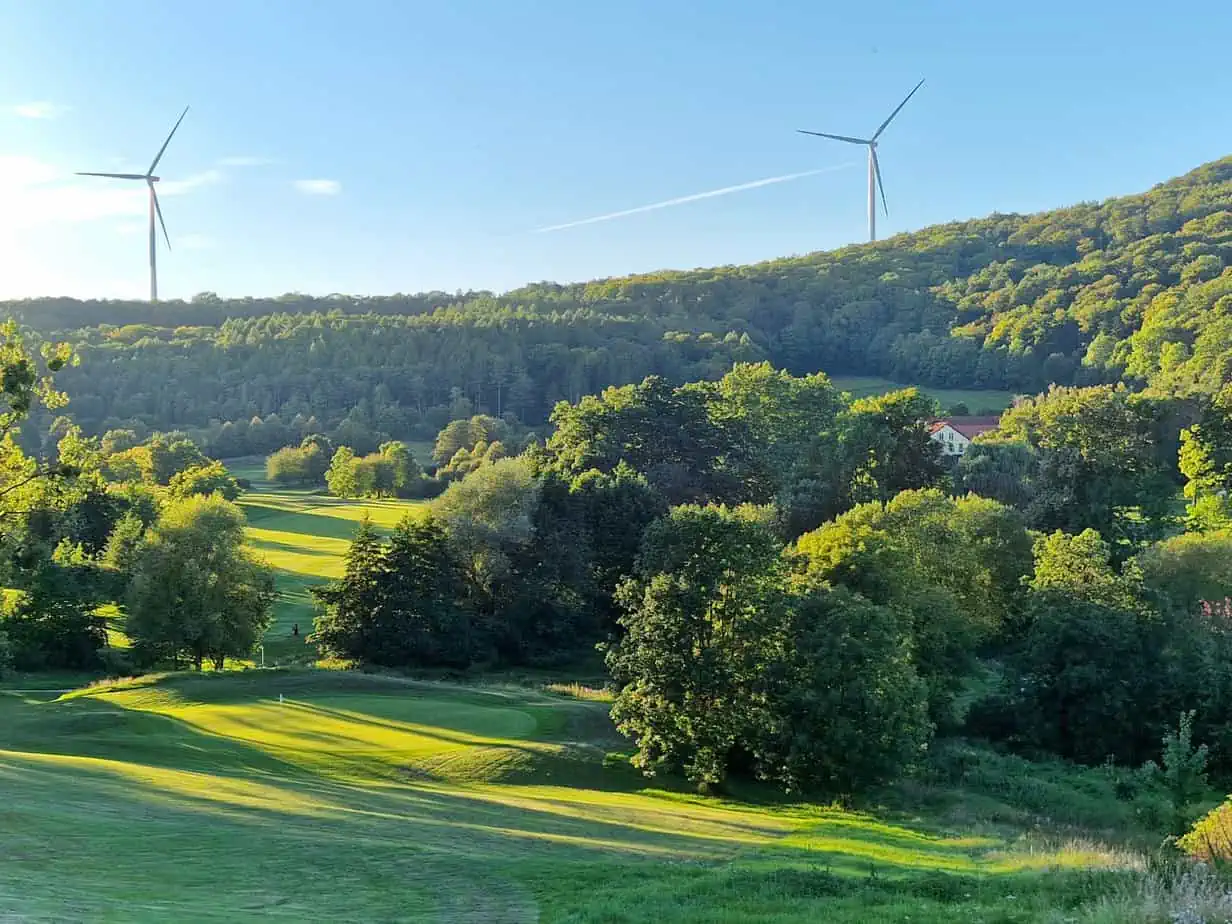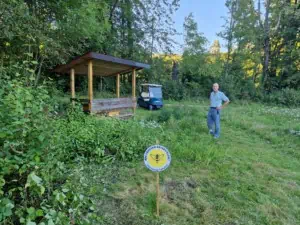GC Zierenberg: Environmental protection becomes a community project
The benchmark of success is a What’s App group called “Nature.” It connects golfers from the Golf Club Zierenberg Gut Escheberg . They are all united by the motivation to make a positive impact on the golf course as a living space. “We are now already at over 50 people who are participating,” explains Matthias Pflüger. Since the beginning of the year, he has been in charge of projects involving golf and nature at the Hessian golf club, which covers a total of 109 hectares. His summary: “It’s a really good feeling to see people here collectively discovering the value of all of the nature and getting more involved.”
A tour of the 18-hole course in the thoroughly hilly landscape shows: The members have really tackled and realized a whole range of projects. This ranges from carpentry and setting up raptor perches to creating a Benjes hedge, rock piles and dead wood areas. An old greenkeeper’s hut was demolished and a new site for bees and the local beekeeper was built there instead. Species-rich meadows have been created, a filing area has been transformed into a biotope, and a whole series of birdhouses have been installed.
As a long-time member of NABU, Pflüger brings a lot of prior knowledge to the table. But in the end, he notes, the success of his efforts depends on the backing of the landlord, the board of directors and also the membership. In this case, everyone seems to be pulling in the same direction. The landlord, who now manages much of the land beyond the pure play area, uses sheep for grazing, mows the meadows no more than twice a year, promotes green energy.
The board has supported participation in the Hessian Golf Association’s Golf Course Habitat project, giving Pflüger a free hand in many areas. “In the end, what we’re all about here is enabling the future viability of the golf facility,” he explains. In the meantime, the golf club itself has become a member of the NABU and has greatly expanded its contact with the local association nearby. “When we first visited here on site, we were definitely met with scepticism,” he noted. “But then they were actually quite taken with all the actions we implement here.”
There is no end in sight for the environmental projects: Bird mapping on the golf course site is in full swing. Pflügler still wants to optimize the signage of the respective areas where a golf course habitat measure has been implemented. “We find that otherwise, many golfers are not as aware of nature itself while golfing.” At the same time, there are around 40 hectares of only extensive land available on the entire site.
This has also significantly improved the joint work of the nature working group. With each practical use on the golf course, the understanding of fauna and flora has grown. Meanwhile, the head greenkeeper is also involved time and again. “Fortunately, he is also very interested in the topic of sustainability,” Pflüger recognized.
Living space golf course, so the realization, can also be a community project that connects. Perhaps a Whats-App group will be the start – and with the joint realization on site, the awareness for the factor of nature beyond fairways and greens will grow.










